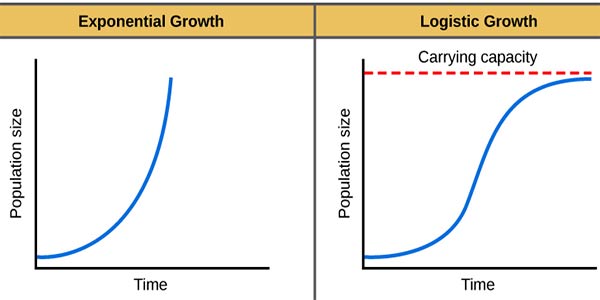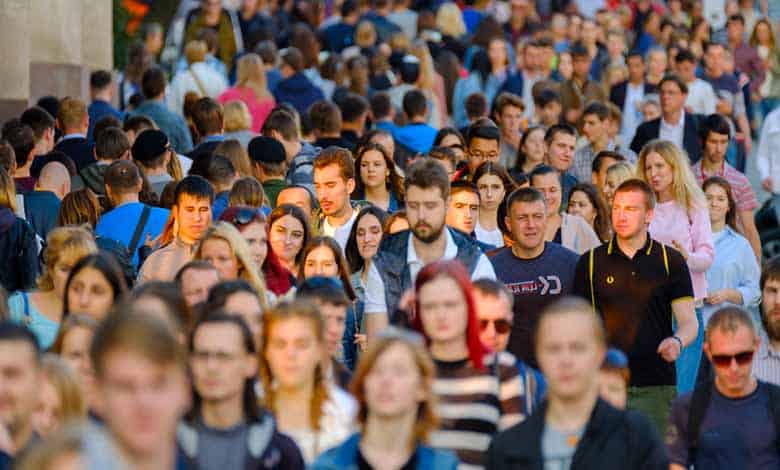Overpopulation is defined by carrying capacity, which means the number of individuals and ecosystem resources like food, water, and space can be sustained indefinitely. It is estimated that around 108 billion people have lived throughout history. That means that around 6.5% of everyone living is alive today.
On average, a live counter shows every birth and every death around the globe, calculating the difference to give this single and seemingly unstoppable number. Population grows when the number of births exceeds the number of deaths.
Far from one born every minute, it’s something more like 250 every minute or about 4 every second. With only a hundred 8 deaths per minute, it all adds up to a growth rate of about one percent per year. It might not sound like much, for experts estimate that by 2050 there could be 10 billion of us! But, if we look at the consumption levels across different contexts globally, cities, and cities, they’re highly unequal.
Could we control human overpopulation?
Controlling human overpopulation is a complex and multifaceted challenge. Here are some strategies that have been proposed and implemented:
Education and empowerment: Providing access to quality education, particularly for girls and women, has been shown to impact reducing birth rates positively. Educated people are more likely to make informed choices about family planning, healthcare, and the benefits of smaller family sizes.
Improved healthcare and family planning: Ensuring access to affordable and comprehensive healthcare services, including family planning methods and contraceptives, can help couples make informed decisions about family size and spacing. Access to reproductive healthcare services is crucial in enabling people to have their desired children.
Economic development and poverty reduction: Poverty correlates with higher birth rates. Focusing on sustainable economic development, poverty reduction, and improving living conditions can help address overpopulation. People with better access to economic opportunities and social support systems tend to have smaller family sizes.
Women’s empowerment and gender equality: Promoting gender equality and women’s empowerment is vital in addressing overpopulation. When women have control over their reproductive choices, access to education and healthcare, and economic opportunities, they tend to have fewer children.
Voluntary family planning programs: Governments and organizations can implement programs that provide information, counseling, and services related to family planning. These programs should respect rights and choices, allowing people to make informed decisions about the size and timing of their families.
Environmental conservation and sustainability: Ensuring sustainable use of resources, protecting ecosystems, and promoting environmentally friendly practices can help mitigate the impact of population growth on the planet. Sustainable development practices and responsible consumption can contribute to a more balanced relationship between human populations and the environment.
It took around two hundred thousand years for Homo sapiens to go from zero to 1 billion, roughly the world population in the 1800s. Then in 200 years, that bigger skyrocketed to what it is today, over seven billion.
So what happened? The Industrial Revolution happened machines that paved the way for modern farming techniques. It allowed farm foods to be produced on an unprecedented scale. As a result, it makes food more affordable and allows families to grow.
- Medical advances also had a huge impact on keeping people alive for longer.
- The main reason for overpopulation today isn’t because too many of us are being born but not enough of us are dying.
So what do we do with all these extra people? The problem isn’t the physical space they take up. Standing side by side, the entire world’s population would fit into 500 square miles, less than the size of Los Angeles. The real issue is with all the things that many people consume food, water, and the Earth’s natural resources.

We’re facing a crisis of overpopulation where the sheer bulk of humans on the planet outstrips its carrying capacity. That carrying capacity defining the maximum number of people the earth can support is fixed. Some estimations imply that we’re already exceeding it, over-consuming earth’s resources by up to 50 percent each year.
- An overpopulated world will see water, fuels, and living space run short while pollution increases and natural environments are destroyed.
So what can we do? Could we control the overpopulation problem? For the time being, we could limit some effects by encouraging urbanization.
- Taking people into vertical cities makes the most of space and local resources and reduces the environmental impacts.
In 1800 only 3 percent of the world’s population lived in cities. Today nearly 50% of the Earth’s seven-and-a-half billion people live in urban areas. Like Dakar, some of the densest have more than 44,000 people in a single square kilometer. But being packed like sardines doesn’t improve the quality of life. So it’s going to take some pretty serious Urban planning to handle.
- To address overpopulation, we must stop making new people slow or even stop the increase altogether.
Overpopulation Solutions
Nearly 40% of pregnancies worldwide are unintended, almost 80 million yearly. So, making male and female birth-control things cheap and readily available to all stand a chance of significantly reducing the birth rate.
Many governments opt for a simple education program to inform people about the overpopulation problem and its effects. If people can’t control their lawns, perhaps it’s better if the government controls them instead. India and China certainly thought so in the 1970s.
Indian officials started a forced sterilization program in 1976, but the brute-force approach prompted massive public outcry, and Family Planning went out the window after that. China’s one-child policy lasted longer and was only formally phased out in 2015.
As a result, the fertility rate in China is now 1.4 children per woman. But there’s some question about whether these measures violated basic human and reproductive rights. It turns out people don’t like governments interfering in the bedroom Department.
However, limiting the number of people being born has its problems too. About 52 percent of the world’s population is under 30 years old, which has started decreasing this number. We chip away at the ablest workforce and have too much dependence. It’s doomed for failure like a tower of cards with its top bigger than its bottom. The opportunity for people to take advantage of others, the devaluing of life itself, and the potential for discrimination are all fairly hefty arguments against it.
Although these recent polls indicate that many people favor dying with dignity. For example, a nationwide poll in Australia of over a thousand people found that 71% supported the legalization of voluntary euthanasia. However, death is final, and it will take a significant cultural change to make it routine.
Overpopulation in future
Today birth rates are falling almost everywhere. The less time a country spends in rapid growth, the quicker Earth’s population stops increasing. So it’s unlikely that the 12 billionth human will ever be born. By 2100, our population will likely peak between 9 and 12 billion. So instead of one big population bomb, the challenge today is defusing a few population “cluster bombs” in pockets of the developing world.
There are two big ways to accomplish this.
- Increasing women’s access to education is the most effective way to lower birth rates. In addition, it improves children’s health and leads to better family planning.
- Empowering women leads to slower population growth.
This alone could reduce greenhouse gas emissions as much as all wind energy by 2050. Today, the richest 10% of humans are responsible for almost half of climate emissions, while the poorest half are only responsible for a tenth. So developed nations will have to reduce their impact and meet developing nations in a cleaner middle.
Populations can’t grow forever without consequences, but under the right circumstances, populations control themselves. But 10 billion people still have many mouths to feed, and doing it without ruining nature or anything like that won’t be easy. But it’s not impossible, and it won’t take some apocalyptic robot army of forced population control to do it. While history has taught us that population growth has natural checks and balances, we have yet to find a limit to creating new life ways.
More Articles:
What Will Humans Look Like In Hundred Years Later?
Difference Between Humans And Animals
Can Animals Understand Human’s Communication?
25 Country Peoples Are Most Beautiful In The World
References:
“Human Overpopulation: Still an Issue of Concern?”. Scientific American.
Fletcher, Robert; Breitling, Jan; Puleo, Valerie. “Barbarian hordes: the overpopulation scapegoat in international development discourse.”
Paul Ehrlich; Anne H. Ehrlich. “Too Many People, Too Much Consumption.”
Ehrlich, Paul R. Ehrlich & Anne. The population explosion. London: Hutchinson.
“Does population growth lead to hunger and famine?”. Our World in Data.
“The specter of “overpopulation.” Transnational Institute.
